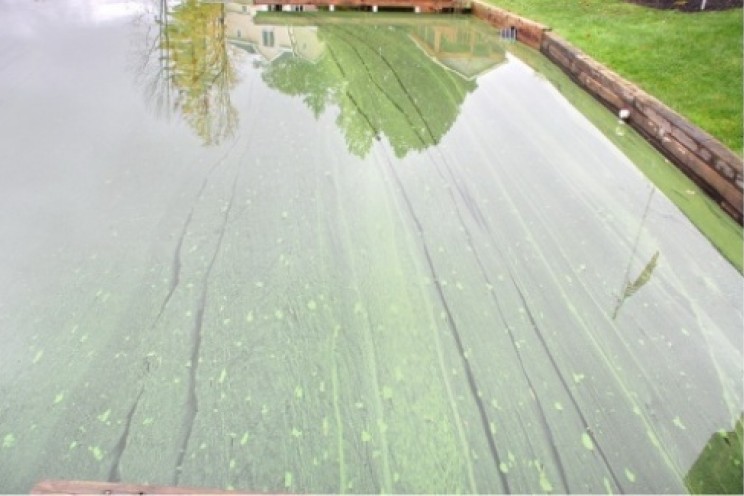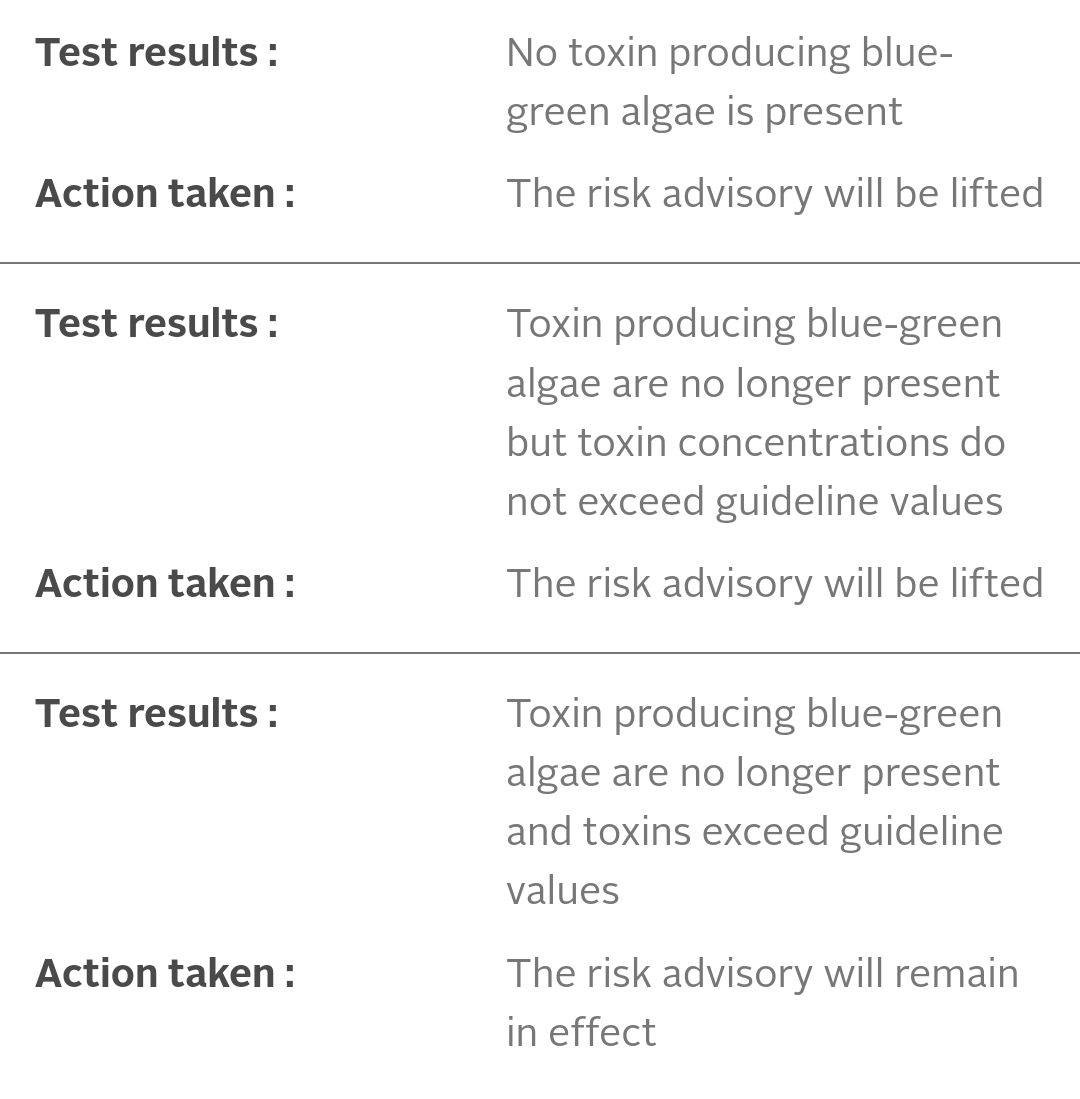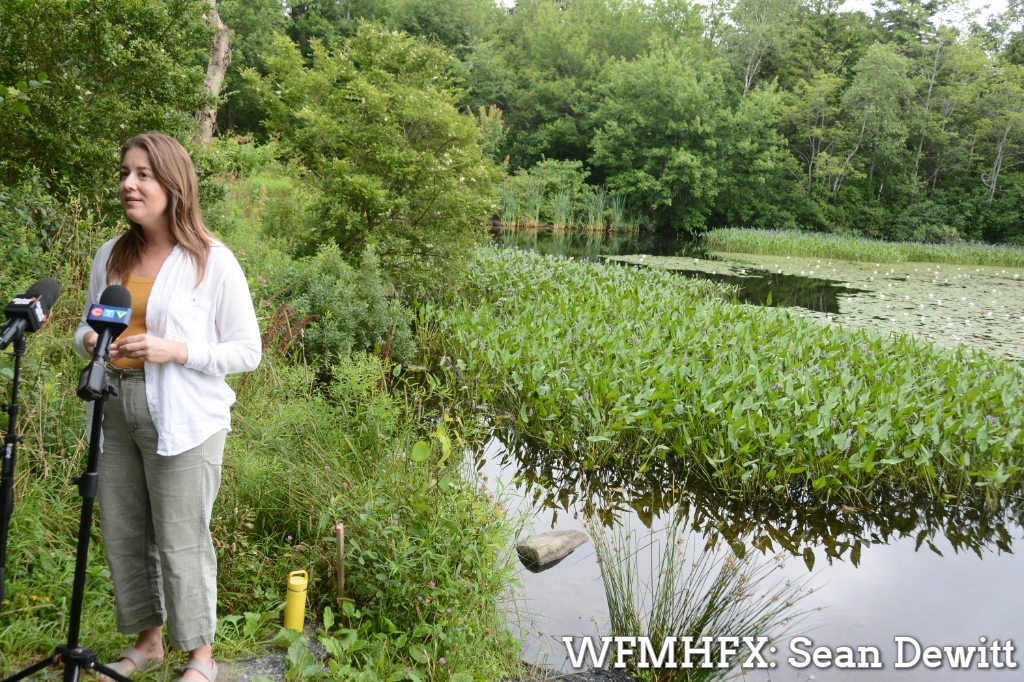**** HRM Media Release
Harmful Algae Blooms

Algae are microscopic plants that naturally live in freshwater and saltwater environments. Algae can grow quickly during the summer and form a larger growth called a bloom. Some types of blue-green algae, also known as cyanobacteria, form toxin-producing blooms. When toxin-producing blooms die and decay, the toxins may be released into the water and could pose health concerns.
Risk Advisories

It is very difficult to predict if blooms will form. It is even more difficult to predict if blooms will release toxins. Blooms of algae and blue-green algae may vary considerably in colour, consistency and overall appearance. The presence of blooms triggers monitoring since toxins are only formed if there are blooms.

A risk advisory is issued when an algae bloom is observed. Initial testing is done to confirm if there are toxin-producing cyanobacteria present in the algae bloom. Certain cyanobacteria are toxin producing and others are not. Due to the difficulty of quickly identifying the presence of toxin-producing algae in a bloom, and the changing nature of water quality, risk advisories are issued using an abundance of caution for public health and safety.
- If there is no risk for toxin production, i.e., there are no toxin-producing algae present in the bloom, the risk advisory will be lifted, and no further testing is required.
- If there is a risk for toxin production, i.e. there are toxin-producing algae present in the bloom, the risk advisory remains in effect. At municipally supervised beaches, visual bloom monitoring will continue until blooms have disappeared and remain absent for seven consecutive days. At that time, water samples will be tested for toxins at a certified lab. The risk advisory will be lifted if toxins are within safe limits. If the toxin levels are above safe limits, the risk advisory will remain in effect until later test results reveal they are within safe limits (below current guideline values).

Reporting suspected contamination

A bloom can appear as surface scum, foam, a mat and/or discoloured water. A bloom can be blue, blue-green, green, red, brown or yellow in colour. Some look like paint streaks on the water, while many others do not affect the look of the water. The municipality asks anyone who observes water conditions with these characteristics to call the provincial Inspection Compliance and Enforcement office at 1-877-9ENVIRO (1-877-936-8476) and Halifax Regional Municipality at 311.
Alerts and closures
Municipal staff monitor and report on the status of 18 beaches across the municipality. Watch for advisories by visiting halifax.ca/beaches and following @hfxgov on Twitter. Updates can also be found at www.NovaScotia.ca/Blue-Green-Algae.
The municipality monitors our supervised beaches for fecal bacteria, blue-green algae, and other waterborne contaminants between July 1 – August 31 annually. If a suspected blue-green bloom is observed at one of our supervised beaches, the beach is closed immediately and water samples are analyzed for toxins. The beach is not reopened until analysis confirms toxin levels are within safe limits for recreation. When a bloom is reported to the province in a lake where the municipality supervises a beach, municipal staff conduct follow-up monitoring to ensure water quality is safe for recreational use.

If a beach is closed, do not swim or engage in any other recreational activity that may involve contact with water (e.g., paddling). Keep children and pets away from the water. Do not drink the lake water and please note that boiling water will not remove toxins.
We encourage everyone to follow beach rules and restrictions to be safe when visiting the beaches.

.




